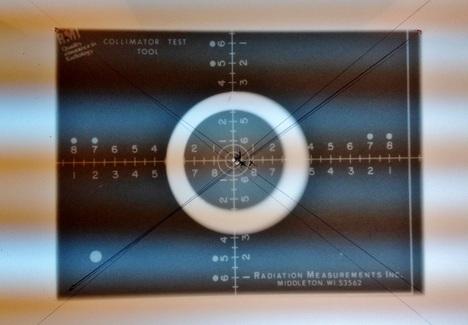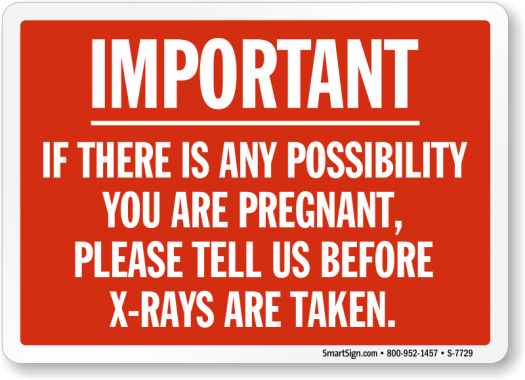Quality Control In Radiography Quiz
(573).jpg)
Do you know about quality control in radiography? Want to test your knowledge regarding quality control (QC) and quality assurance (QA) in radiology? The quiz given below will help you with that. QC testing includes monitoring, evaluating, and maintaining equipment for optimal performance and stability. The following quiz on X-ray quality control is all about the procedures, guidelines, and organization rules implemented to maintain the safety of patient care in radiography. Do you think you can pass this test? Good Luck!
- 1.
Which of the Following Helps in Reducing Internal Radiation Exposure?
- A.
Control of Contamination
- B.
Good Hygiene
- C.
Use Proper Protective Equipment
- D.
All of the Above
Correct Answer
D. All of the AboveExplanation
All of the options mentioned - control of contamination, good hygiene, and use of proper protective equipment - help in reducing internal radiation exposure. Control of contamination involves preventing the spread of radioactive materials and keeping the environment clean. Good hygiene practices, such as regular handwashing, help in removing any radioactive particles that may have been deposited on the skin. Using proper protective equipment, such as gloves, masks, and suits, helps in minimizing direct contact with radioactive materials and reduces the risk of internal radiation exposure. Therefore, all of these measures contribute to reducing internal radiation exposure.Rate this question:
-
- 2.
What Does the Radiation Term ALARA Stand For?
- A.
Accepted Lowest Achievable Radiation Alarms
- B.
Allowable Levels of Accepted Radiation
- C.
As Long as Radiation is Allowable
- D.
As Low As Reasonably Achievable
Correct Answer
D. As Low As Reasonably AchievableExplanation
ALARA stands for "As Low As Reasonably Achievable." This term refers to the principle of minimizing radiation exposure to the lowest possible level that is still practical and achievable. It emphasizes the importance of using all available resources and technologies to reduce radiation exposure in order to protect individuals and the environment. The goal is to maintain radiation doses as low as reasonably achievable without compromising the benefits of the activity being performed.Rate this question:
-
- 3.
In Radiography Quality Control, Which of the Following Means that the X-ray’s Central Ray Will Actually Come Out on the Area Where the Cross-Hairs Meet?
- A.
Beam perpendicularity
- B.
Field Congruence
- C.
None of the Above
- D.
All of the Above
Correct Answer
A. Beam perpendicularityExplanation
Beam perpendicularity means that the X-ray's central ray will actually come out on the area where the cross-hairs meet. This concept ensures that the X-ray beam is aligned properly and perpendicular to the image receptor, resulting in accurate and precise imaging. It is an important quality control measure in radiography to ensure the correct positioning and alignment of the X-ray beam for optimal image quality.Rate this question:
-
- 4.
Which of the Following is Not One of the Three Major Principles Assisting the ALARA Concept?
- A.
Distance
- B.
Maintenance
- C.
Shielding
- D.
Time
Correct Answer
B. MaintenanceExplanation
The ALARA concept stands for "As Low As Reasonably Achievable" and is a principle used in radiation protection to minimize exposure to radiation. The three major principles assisting the ALARA concept are distance, shielding, and time. Maintenance is not one of the major principles, as it does not directly relate to minimizing radiation exposure.Rate this question:
-
- 5.
According to the International Commission on Radiological Protection, the Rule for Performing Abdominal and Pelvic X-rays on Pregnant Women Can Only be Done During the ____ days Following the Onset of their Menstruation.
- A.
5
- B.
7
- C.
10
- D.
12
Correct Answer
C. 10Explanation
According to the International Commission on Radiological Protection, abdominal and pelvic X-rays can only be performed on pregnant women during the 10 days following the onset of their menstruation. This time frame is likely chosen because it ensures that the woman is not in the fertile period of her menstrual cycle, reducing the risk of harm to the developing fetus.Rate this question:
-
- 6.
According to the Occupational Safety and Health Administration, PPE stands for...
- A.
Personal Protective Equipment
- B.
Potential Point of Entry
- C.
Power Program Examination
- D.
Pro Patient Exam
Correct Answer
A. Personal Protective EquipmentExplanation
PPE stands for Personal Protective Equipment, which refers to specialized clothing or equipment worn by individuals to protect themselves from potential hazards or risks in the workplace. This can include items such as helmets, gloves, goggles, masks, and safety shoes. The purpose of PPE is to minimize the exposure to harmful substances, prevent injuries, and maintain a safe working environment. It is an essential requirement in many industries to ensure the health and safety of workers.Rate this question:
-
- 7.
In Radiography Quality Control, Which of the Following Means that the Light Field Seen When Collimating Will Correspond to What Will Happen?
- A.
Beam perpendicularity
- B.
Field Congruence
- C.
None of the Above
- D.
All of the Above
Correct Answer
B. Field CongruenceExplanation
Field congruence means that the light field seen when collimating will correspond to what will happen. This means that the light field will accurately represent the size and shape of the radiation field, ensuring that the area being irradiated is properly aligned with the intended target. It is an important aspect of radiography quality control as it helps to ensure accurate and precise imaging, minimizing the risk of errors or inaccuracies in the final image.Rate this question:
-
- 8.
Which of the Following is A Radiography Quality Control Procedure that is Usually Done Once a Year?
- A.
Cassettes and screen cleaning
- B.
Retake analysis
- C.
Safelight test
- D.
Visual inspection of cleanliness of imaging systems
Correct Answer
C. Safelight testExplanation
A safelight test is a radiography quality control procedure that is typically performed once a year. This test is conducted to ensure that the safelight used in the darkroom is functioning properly and does not emit any light that could potentially damage the film or affect the quality of the radiographic images. By performing this test annually, the facility can ensure that the safelight is providing the necessary protection and maintaining the required standards for producing high-quality radiographs.Rate this question:
-
- 9.
What is the Device used for Generating Beams of Waves or Particles that Have Parallel Paths?
- A.
Collimator
- B.
Echocardiography Machine
- C.
FMRI
- D.
Ultrasonography Machine
Correct Answer
A. CollimatorExplanation
A collimator is a device used for generating beams of waves or particles that have parallel paths. It is commonly used in various fields such as optics, radiology, and nuclear physics. A collimator helps to control the direction and shape of the beam, ensuring that the waves or particles travel in a straight line and are parallel to each other. This is achieved through the use of a narrow slit or small aperture that only allows the desired particles or waves to pass through, while blocking out any unwanted diverging or scattered radiation.Rate this question:
-
- 10.
What Year Was the X-Ray Discovered?
- A.
1895
- B.
1910
- C.
1915
- D.
1921
Correct Answer
A. 1895Explanation
The discovery of X-rays occurred in 1895. Wilhelm Conrad Roentgen, a German physicist, accidentally discovered X-rays while experimenting with cathode rays in his lab. He noticed that a fluorescent screen in his lab started to glow even though it was not directly exposed to the cathode rays. After further investigation, Roentgen discovered that these new rays could penetrate through solid objects and create shadow-like images on photographic plates. This groundbreaking discovery revolutionized the field of medicine and led to the development of X-ray technology for diagnostic purposes.Rate this question:
-
Quiz Review Timeline +
Our quizzes are rigorously reviewed, monitored and continuously updated by our expert board to maintain accuracy, relevance, and timeliness.
-
Current Version
-
Aug 18, 2023Quiz Edited by
ProProfs Editorial Team -
Feb 27, 2018Quiz Created by
Perlita Yamit
 Back to top
Back to top




